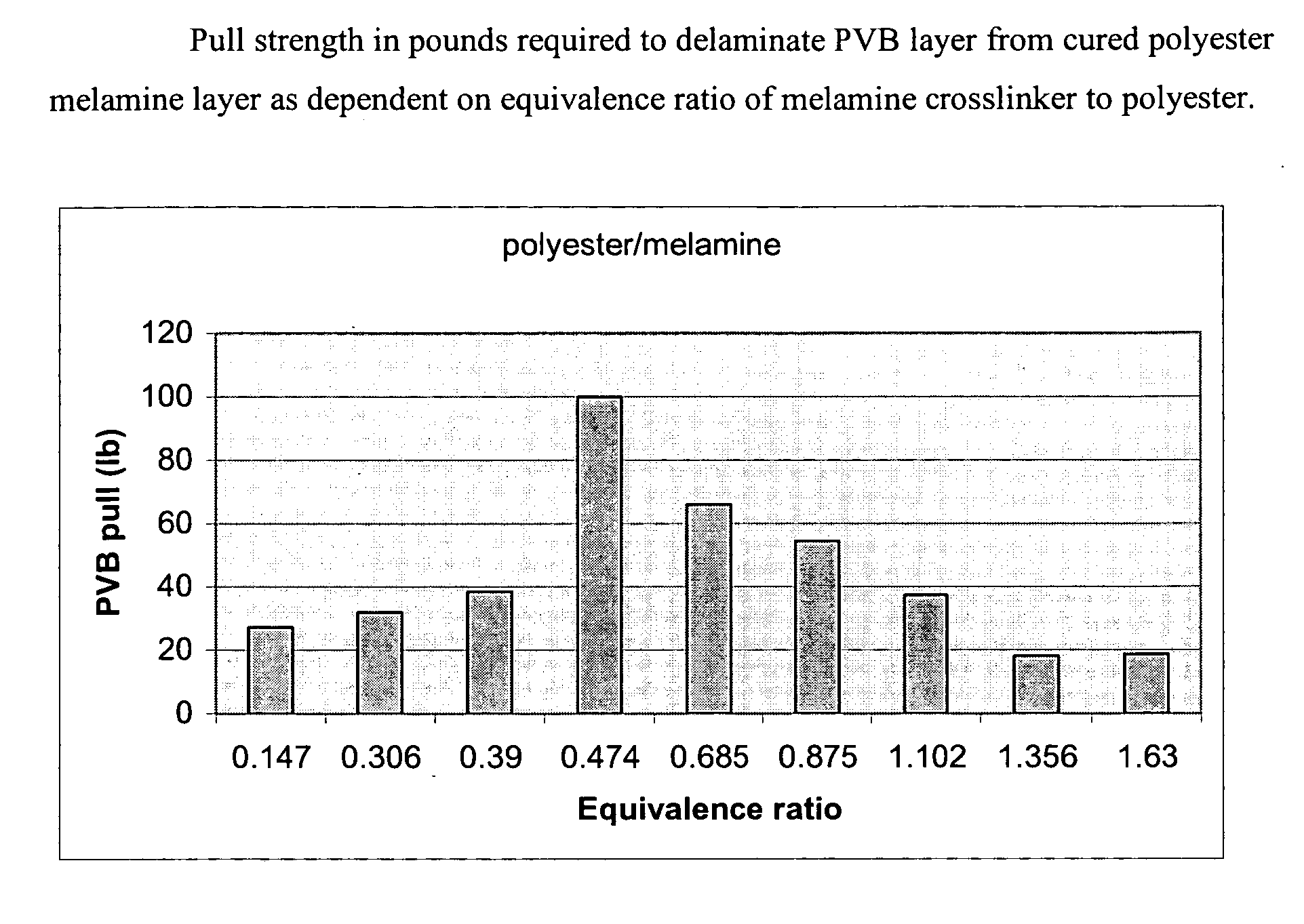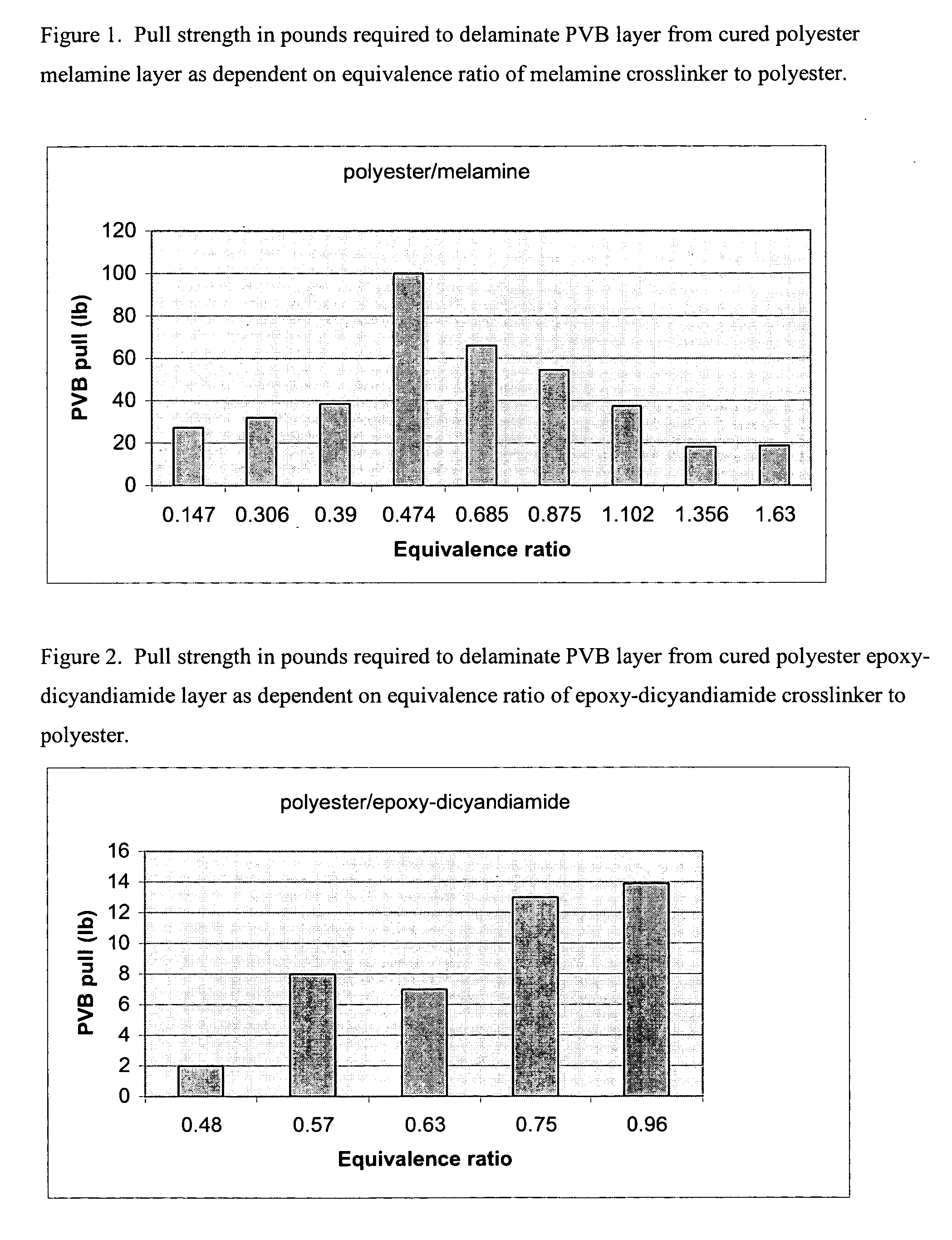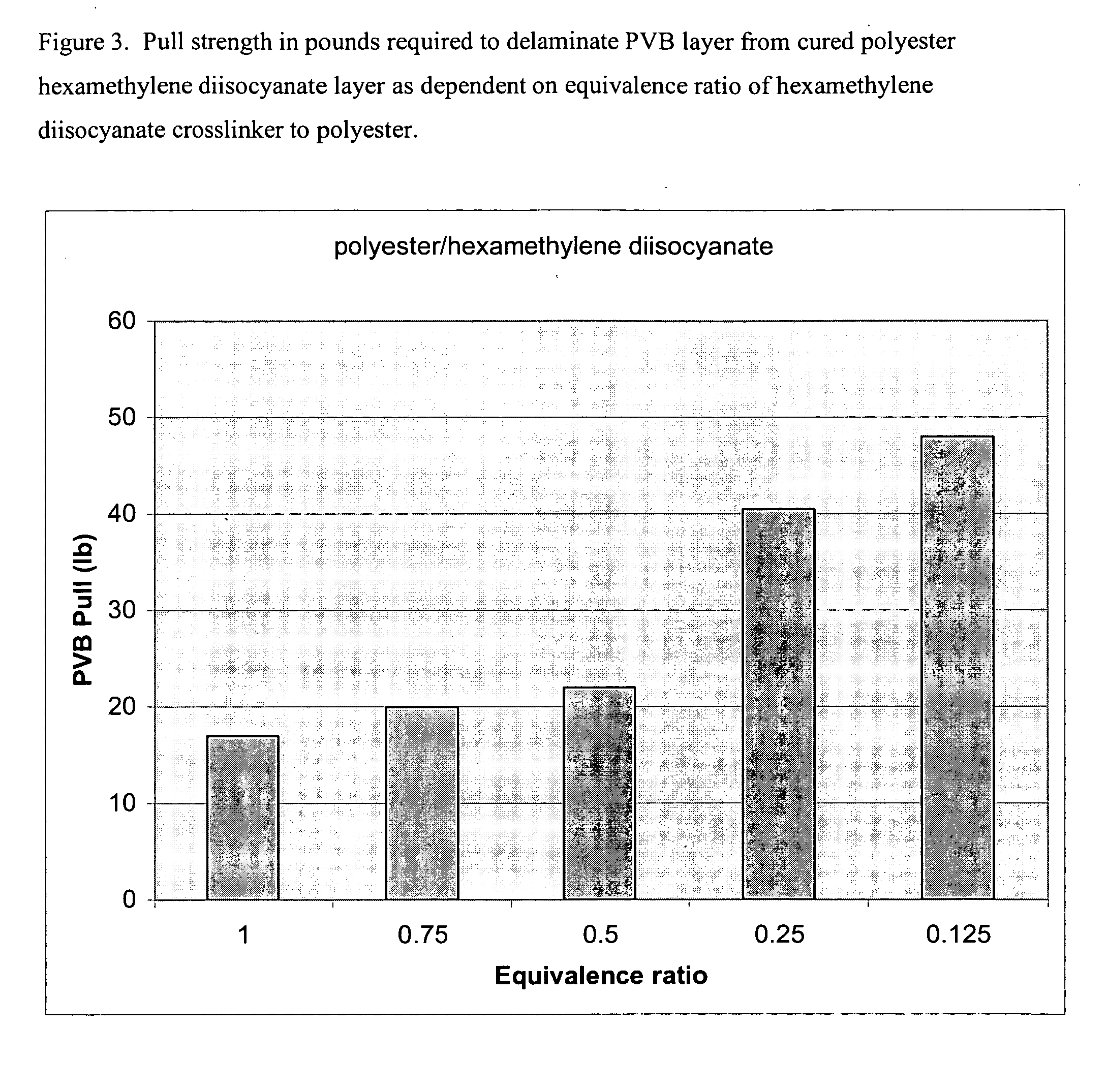Method of decorating laminated glass
a technology of laminated glass and decoration method, which is applied in the direction of coatings, instruments, transportation and packaging, etc., can solve the problems of warping or shape distortion, the application of decoration methods that cannot employ screen-printing, etc., and achieves the effect of superior clarity and adequate strength
- Summary
- Abstract
- Description
- Claims
- Application Information
AI Technical Summary
Benefits of technology
Problems solved by technology
Method used
Image
Examples
Embodiment Construction
[0013] The method of forming a decorated glass structure involves a pigment package composition, which comprises a crosslinkable thermoset resin, a crosslinker and a pigment. However, the composition typically further comprises solvents, catalysts, surfactants, light stabilizers, UV blockers, and adhesion promoters. Each ingredient is discussed in turn.
[0014] Thermoset Resin. Broadly, the green pigment package composition, prior to curing, comprises about 50 to about 95% thermoset resin, preferably about 55 to about 90%, more preferably about 60 to about 75% and most preferably about 60 to about 65%. All percentages herein are by weight. The thermoset resin may be any thermoplastic polymer having crosslinkable functional sites. Suitable types of thermoset resins include polyesters, urethanes, vinyl polymers, acrylics, styrenes, aromatic polyolefins, aliphatic polyolefins, polycarbonates, copolymers thereof, and blends thereof. The preferred thermoset resins are polyesters. Polyeste...
PUM
| Property | Measurement | Unit |
|---|---|---|
| Fraction | aaaaa | aaaaa |
| Fraction | aaaaa | aaaaa |
| Fraction | aaaaa | aaaaa |
Abstract
Description
Claims
Application Information
 Login to View More
Login to View More - R&D
- Intellectual Property
- Life Sciences
- Materials
- Tech Scout
- Unparalleled Data Quality
- Higher Quality Content
- 60% Fewer Hallucinations
Browse by: Latest US Patents, China's latest patents, Technical Efficacy Thesaurus, Application Domain, Technology Topic, Popular Technical Reports.
© 2025 PatSnap. All rights reserved.Legal|Privacy policy|Modern Slavery Act Transparency Statement|Sitemap|About US| Contact US: help@patsnap.com



